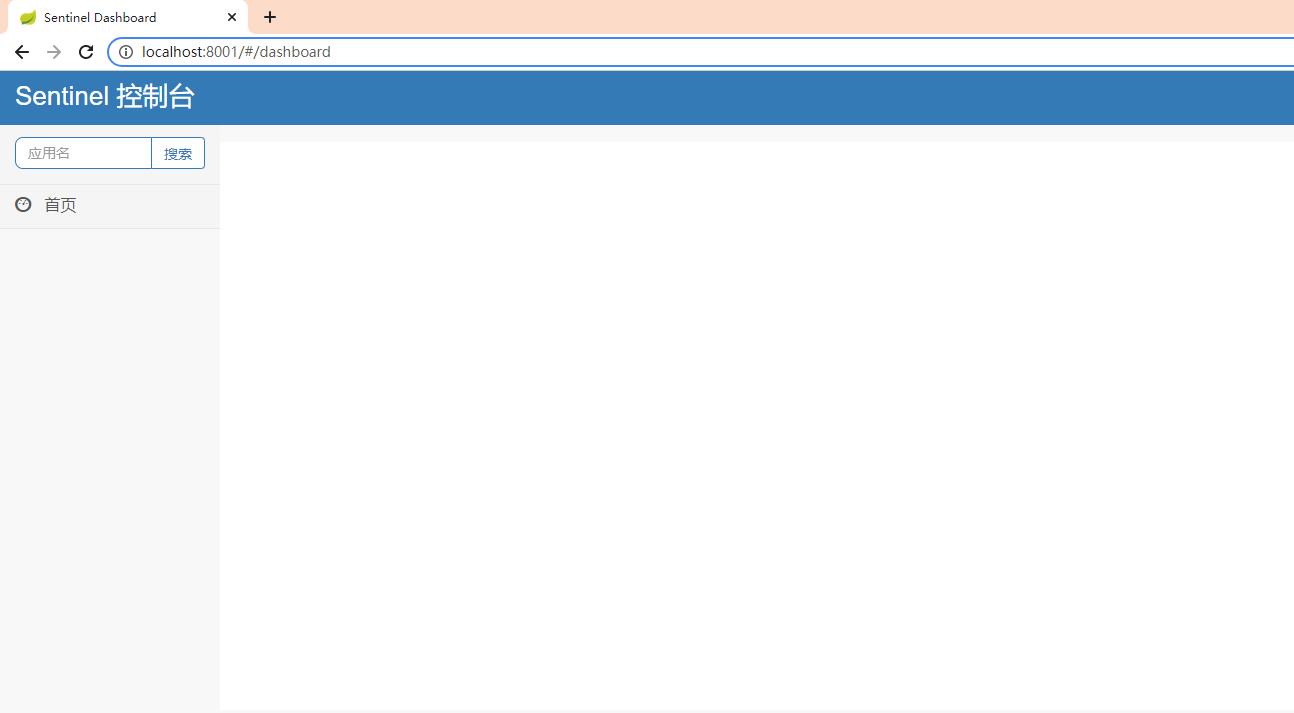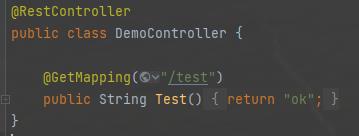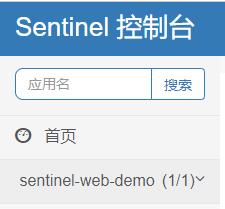sentienl持久化到Apollo
Posted 皓洲
tags:
篇首语:本文由小常识网(cha138.com)小编为大家整理,主要介绍了sentienl持久化到Apollo相关的知识,希望对你有一定的参考价值。
sentinel 学习笔记
前段时间大致用了一下sentinel。但是阿里云的sentinel开源并没有实现持久化,针对这个问题我采用了apollo去实现sentinel的持久化。下面就记录一下实现sentinel持久化的过程。
Sentinel 是什么?
随着微服务的流行,服务和服务之间的稳定性变得越来越重要。Sentinel 是面向分布式服务架构的流量控制组件,主要以流量为切入点,从限流、流量整形、熔断降级、系统负载保护、热点防护等多个维度来帮助开发者保障微服务的稳定性。
如何使用sentinel?
对于初学者来说,使用sentinel只需要限流功能就可以了,所以在本篇文章中,仅针对SpringCloud项目的限流功能进行阐述。
开启sentinel控制台
可以先去官网下载源代码,然后在本地打开sentinel控制台,账号密码都是sentinel,端口是8001(都可以在application配置里面改)

打开后如图所示,因为没有任何服务连接sentinel控制台,所以现在是一片空白。
开启一个项目连接sentinel控制台
开启一个SpringCloud项目,写一个最简单的controller

添加sentinel依赖
<dependency>
<groupId>org.springframework.cloud</groupId>
<artifactId>spring-cloud-starter-alibaba-sentinel</artifactId>
<version>0.9.0.RELEASE</version>
</dependency>
添加application配置
# port settings
server:
port: 8081
spring:
application:
name: sentinel-web-demo
cloud:
sentinel:
transport:
dashboard: localhost:8001 # sentinel客户端服务的地址
eager: true
这时候再登录sentinel就可以看到名为sentinel-web-demo的服务注册上去了

sentinel实现限流

如图所示,在流控规则下新增一个流控规则,资源名中填写请求路径,然后设置阈值就可以了。


成功时正常显示,失败时则会输出提示信息。
是的,完成了这步我们就实现了最简单的sentinel控流。
sentinel的持久化
很快我们就能发现存在这样的问题,一旦服务器或者客户端重启了,sentinel的控流规则就失效了。这对于一个上线的项目来说无疑是致命的,万一机器出现故障,那么我们大量的sentinel控流规则都会消失。这是因为开源的sentinel控流规则是存储在内存中的,我们需要通过一些方法来实现sentinel的持久化,在这里就只简单说一下使用apollo实现sentinel持久化。
感兴趣的同学可以看一下官方的文档
| 推送模式 | 说明 | 优点 | 缺点 |
|---|---|---|---|
| 原始模式 | API 将规则推送至客户端并直接更新到内存中,扩展写数据源(WritableDataSource) | 简单,无任何依赖 | 不保证一致性;规则保存在内存中,重启即消失。严重不建议用于生产环境 |
| Pull 模式 | 扩展写数据源(WritableDataSource), 客户端主动向某个规则管理中心定期轮询拉取规则,这个规则中心可以是 RDBMS、文件 等 | 简单,无任何依赖;规则持久化 | 不保证一致性;实时性不保证,拉取过于频繁也可能会有性能问题。 |
| Push 模式 | 扩展读数据源(ReadableDataSource),规则中心统一推送,客户端通过注册监听器的方式时刻监听变化,比如使用 Nacos、Zookeeper 等配置中心。这种方式有更好的实时性和一致性保证。生产环境下一般采用 push 模式的数据源。 | 规则持久化;一致性;快速 | 引入第三方依赖 |
sentinel 控制台代码改造
pom.xml文件先把Apollo包的test作用域去掉,顺便log4j更新成 2.15(防止恶意代码注入)
<dependency>
<groupId>log4j</groupId>
<artifactId>log4j</artifactId>
<version>1.2.15</version>
</dependency>
<dependency>
<groupId>com.ctrip.framework.apollo</groupId>
<artifactId>apollo-openapi</artifactId>
<version>1.2.0</version>
<!-- <scope>test</scope>-->
</dependency>
写一个Apollo的config,Converter<T,S>指的是将S转换为T类型,portalUrl是Apollo的地址,token是Apollo生成的token
public class ApolloConfig
@Value("$apollo.meta")
private String portalUrl;
@Value("$apollo.token")
private String token;
/**
* 流控规则编码
*
* @return
*/
@Bean
public Converter<List<FlowRuleEntity>, String> flowRuleEntityEncoder()
return JSON::toJSONString;
/**
* 流控规则解码
*
* @return
*/
@Bean
public Converter<String, List<FlowRuleEntity>> flowRuleEntityDecoder()
return s -> JSON.parseArray(s, FlowRuleEntity.class);
/**
* 降级规则编码
*
* @return
*/
@Bean
public Converter<List<DegradeRuleEntity>, String> degradeRuleEntityEncoder()
return JSON::toJSONString;
/**
* 降级规则解码
*
* @return
*/
@Bean
public Converter<String, List<DegradeRuleEntity>> degradeRuleEntityDecoder()
return s -> JSON.parseArray(s, DegradeRuleEntity.class);
/**
* 授权规则编码
*
* @return
*/
@Bean
public Converter<List<AuthorityRuleEntity>, String> authorityRuleEntityEncoder()
return JSON::toJSONString;
/**
* 授权规则解码
*
* @return
*/
@Bean
public Converter<String, List<AuthorityRuleEntity>> authorityRuleEntityDecoder()
return s -> JSON.parseArray(s, AuthorityRuleEntity.class);
/**
* 系统规则编码
*
* @return
*/
@Bean
public Converter<List<SystemRuleEntity>, String> systemRuleEntityEncoder()
return JSON::toJSONString;
/**
* 系统规则解码
*
* @return
*/
@Bean
public Converter<String, List<SystemRuleEntity>> systemRuleEntityDecoder()
return s -> JSON.parseArray(s, SystemRuleEntity.class);
/**
* 热点规则编码
*
* @return
*/
@Bean
public Converter<List<ParamFlowRuleEntity>, String> paramFlowRuleEntityEncoder()
return JSON::toJSONString;
/**
* 热点规则解码
*
* @return
*/
@Bean
public Converter<String, List<ParamFlowRuleEntity>> paramFlowRuleEntityDecoder()
return s -> JSON.parseArray(s, ParamFlowRuleEntity.class);
/**
* 集群流控规则编码
*
* @return
*/
@Bean
public Converter<List<ClusterAppAssignMap>, String> clusterGroupEntityEncoder()
return JSON::toJSONString;
/**
* 集群流控规则解码
*
* @return
*/
@Bean
public Converter<String, List<ClusterAppAssignMap>> clusterGroupEntityDecoder()
return s -> JSON.parseArray(s, ClusterAppAssignMap.class);
@Bean
public ApolloOpenApiClient apolloOpenApiClient()
ApolloOpenApiClient client = ApolloOpenApiClient.newBuilder()
.withPortalUrl(portalUrl)
.withToken(token)
.build();
return client;
建一个Apollo的Util类
public final class ApolloConfigUtil
/**
* 流控规则id
*/
public static final String FLOW_DATA_ID_POSTFIX = "sentinel-flow-rules";
/**
* 降级规则id
*/
public static final String DEGRADE_DATA_ID_POSTFIX = "sentinel-degrade-rules";
/**
* 热点规则id
*/
public static final String PARAM_FLOW_DATA_ID_POSTFIX = "sentinel-param-flow-rules";
/**
* 系统规则id
*/
public static final String SYSTEM_DATA_ID_POSTFIX = "sentinel-system-rules";
/**
* 授权规则id
*/
public static final String AUTHORITY_DATA_ID_POSTFIX = "sentinel-authority-rules";
/**
* 集群流控id
*/
public static final String CLUSTER_GROUP_DATA_ID_POSTFIX = "sentinel-cluster-group-rules";
/**
* 规则存储nameSpace
*/
public static final String NAMESPACE_NAME = "application";
private ApolloConfigUtil()
public static String getClusterGroupDataId(String appName)
return String.format("%s_%s",appName,CLUSTER_GROUP_DATA_ID_POSTFIX);
public static String getFlowDataId(String appName)
return String.format("%s_%s",appName,FLOW_DATA_ID_POSTFIX);
public static String getDegradeDataId(String appName)
return String.format("%s_%s",appName,DEGRADE_DATA_ID_POSTFIX);
public static String getParamFlowDataId(String appName)
return String.format("%s_%s",appName,PARAM_FLOW_DATA_ID_POSTFIX);
public static String getSystemDataId(String appName)
return String.format("%s_%s",appName,SYSTEM_DATA_ID_POSTFIX);
public static String getAuthorityDataId(String appName)
return String.format("%s_%s",appName,AUTHORITY_DATA_ID_POSTFIX);
public static String getNamespaceName(String appName)
return String.format("%s_%s",appName,NAMESPACE_NAME);
接下来写一个控流规则的Provider和Publisher
@Component("flowRuleApolloProvider")
public class FlowRuleApolloProvider implements DynamicRuleProvider<List<FlowRuleEntity>>
@Autowired
private ApolloOpenApiClient apolloOpenApiClient;
@Autowired
private Converter<String, List<FlowRuleEntity>> converter;
@Value("$app.id")
private String appId;
@Value("$spring.profiles.active")
private String env;
@Value("$apollo.clusterName")
private String clusterName;
@Value("$apollo.namespaceName")
private String namespaceName;
@Override
public List<FlowRuleEntity> getRules(String appName)
String flowDataId = ApolloConfigUtil.getFlowDataId(appName);
OpenNamespaceDTO openNamespaceDTO = apolloOpenApiClient.getNamespace(appId, env, clusterName, namespaceName);
String rules = openNamespaceDTO
.getItems()
.stream()
.filter(p -> p.getKey().equals(flowDataId))
.map(OpenItemDTO::getValue)
.findFirst()
.orElse("");
if (StringUtil.isEmpty(rules))
return new ArrayList<>();
return converter.convert(rules);
@Component("flowRuleApolloPublisher")
public class FlowRuleApolloPublisher implements DynamicRulePublisher<List<FlowRuleEntity>>
@Autowired
private ApolloOpenApiClient apolloOpenApiClient;
@Autowired
private Converter<List<FlowRuleEntity>, String> converter;
@Value("$app.id")
private String appId;
@Value("$spring.profiles.active")
private String env;
@Value("$apollo.user")
private String user;
@Value("$apollo.clusterName")
private String clusterName;
@Value("$apollo.namespaceName")
private String namespaceName;
@Override
public void publish(String app, List<FlowRuleEntity> rules)
AssertUtil.notEmpty(app, "app name cannot be empty");
if (rules == null)
return;
filterField(rules);
// Increase the configuration
String flowDataId = ApolloConfigUtil.getFlowDataId(app);
OpenItemDTO openItemDTO = new OpenItemDTO();
openItemDTO.setKey(flowDataId);
openItemDTO.setValue(converter.convert(rules));
openItemDTO.setComment("Program auto-join");
openItemDTO.setDataChangeCreatedBy(user);
apolloOpenApiClient.createOrUpdateItem(appId, env, clusterName, namespaceName, openItemDTO);
// Release configuration
NamespaceReleaseDTO namespaceReleaseDTO = new NamespaceReleaseDTO();
namespaceReleaseDTO.setEmergencyPublish(true);
namespaceReleaseDTO.setReleaseComment("Modify or add configurations");
namespaceReleaseDTO.setReleasedBy(user);
namespaceReleaseDTO.setReleaseTitle("Modify or add configurations");
apolloOpenApiClient.publishNamespace(appId, env, clusterName, namespaceName, namespaceReleaseDTO);
// System.out.println("publish");
/**
* 过滤不必要的字段
*
* @param rules
*/
private void filterField(List<FlowRuleEntity> rules)
// 对不必要的信息进行过滤
for (FlowRuleEntity rule : rules)
rule.setGmtCreate(null);
rule.setGmtModified(null);
// rule.setIp(null);git
// rule.setPort(null);
然后就是改造Controller代码,在这里我就只针对FlowControllerV1做修改。
在这之前我们先把刚刚写的provider和publisher注入进Controller
@Autowired
@Qualifier("flowRuleApolloProvider")
private DynamicRuleProvider<List<FlowRuleEntity>> ruleProvider;
@Autowired
@Qualifier("flowRuleApolloPublisher")
private DynamicRulePublisher<List<FlowRuleEntity>> rulePublisher;
首先是列出所有规则的接口,我们可以直接从apollo中获取规则,这里用的是ruleProvider.getRules(app);
@GetMapping("/rules")
@AuthAction(PrivilegeType.READ_RULE)
public Result<List<FlowRuleEntity>> apiQueryMachineRules(@RequestParam String app,
@RequestParam String ip,
@RequestParam Integer port)
if (StringUtil.isEmpty(app))
return Result.ofFail(-1, "app can't be null or empty");
if (StringUtil.isEmpty(ip))
return Result.ofFail(-1, "ip can't be null or empty");
if (port == null)
return Result.ofFail(-1, "port can't be null");
try
List<FlowRuleEntity> rules = ruleProvider.getRules(app);
repository.saveAll(rules);
if (rules != null && !rules.isEmpty())
for (FlowRuleEntity entity : rulessentienl控制台客户端持久化到Apollo